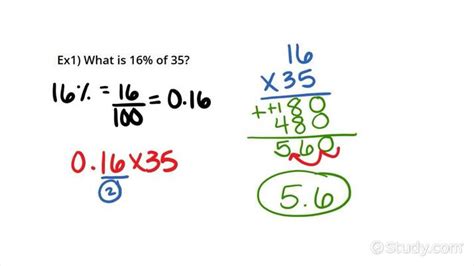How to Find a Number as a Percentage: A Simple Guide
Finding a number as a percentage is a fundamental skill with applications across various fields, from calculating grades to understanding financial data. This guide breaks down the process into simple steps, ensuring you master this essential calculation.
Understanding Percentages
Before diving into calculations, let's solidify our understanding of percentages. A percentage represents a fraction of 100. For example, 50% means 50 out of 100, or 50/100, which simplifies to 1/2.
Calculating a Number as a Percentage of Another Number
This is the most common percentage calculation. The formula is:
(Part / Whole) * 100% = Percentage
Let's illustrate with an example:
Example: You scored 25 points out of a possible 50 points on a test. What is your percentage score?
-
Identify the parts: The part is 25 (your score), and the whole is 50 (the total possible score).
-
Apply the formula: (25 / 50) * 100% = 50%
Therefore, your test score is 50%.
Finding the Percentage Increase or Decrease
This calculation determines the percentage change between two numbers. The formula is:
((New Value - Old Value) / Old Value) * 100% = Percentage Change
A positive result indicates an increase, while a negative result shows a decrease.
Example: The price of a product increased from $50 to $60. What is the percentage increase?
-
Identify the values: The old value is $50, and the new value is $60.
-
Apply the formula: (($60 - $50) / $50) * 100% = 20%
The price increased by 20%.
Calculating a Percentage of a Number
This involves finding a specific percentage of a given number. The formula is:
(Percentage / 100) * Number = Result
Example: Calculate 20% of 150.
-
Convert the percentage to a decimal: 20% = 0.20
-
Apply the formula: 0.20 * 150 = 30
Therefore, 20% of 150 is 30.
Tips for Accurate Percentage Calculations
- Double-check your values: Ensure you've correctly identified the part and the whole in your calculations.
- Use a calculator: For complex calculations, a calculator can greatly improve accuracy and speed.
- Practice regularly: The more you practice, the more comfortable and proficient you'll become.
Mastering Percentage Calculations: Beyond the Basics
Understanding percentage calculations is crucial for various real-world applications, including budgeting, finance, data analysis, and more. By mastering these fundamental techniques, you'll be well-equipped to tackle a wide range of numerical challenges. Consistent practice and a clear understanding of the formulas are key to success.
